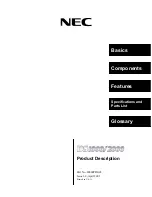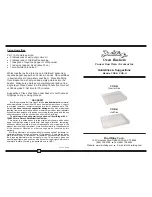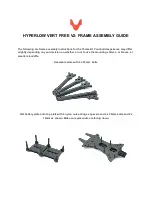
3.0 In stal la tion
3.1
Re ceipt of Equip ment
All equipment shipped by General Monitors
is prepackaged in shock absorbing containers
which provide considerable protection against
physical damage. The contents should be
carefully removed and checked against the
packing slip. If any damage has occurred or
if there is any discrepancy in the order, notify
General Monitors as soon as possible. All
subsequent correspondence with General
Monitors must specify the equipment part and
serial numbers.
Each Model S214 is completely checked by
the factory. However, a complete check-out is
necessary upon initial installation and start up
to ensure system integrity.
3.2
Sen sor Lo ca tion Con sid era -
tions
There are no standard rules for sensor
placement since the optimum sensor location
is different for each application. The
customer must evaluate conditions at the
facility to make this determination.
Generally, the Model S214 Smart Sensor
should be easily accessible for calibration
checks. The sensor assembly should be
mounted pointing down to prevent water
build-up on the sensor head. The sensor
assembly should not be placed where it may
be coated by contaminating substances.
Although the Model S214 is RFI resistant, it
should not be mounted in close proximity to
radio transmitters or similar equipment.
l
Locate the Model S214 where prevailing
air currents contain the maximum
concentration of gas.
l
Locate the Model S214 near possible
sources of gas leaks.
l
Observe the Model S214’s temperature
specification and locate the unit away
from concentrated sources of heat.
l
Sensor Assemblies should be mounted in
an area that is as free from wind, dust,
water, shock, and vibration as possible.
See Appendix, section 5.1.4 for the
environmental specifications of the unit.
Sensors may be adversely affected by
prolonged exposure to certain materials. Loss
of sensitivity or corrosion may be gradual if
such materials are present in low
concentrations, or it may be rapid at high
concentrations. The more important materials
adversely affecting sensors are:
l
Silicones (often contained in greases and
aerosols). Silicones do not chemically
attack the sensor, they coat it and reduce
or inhibit its response to the presence of
H
2
S gas.
l
Halides ... compounds containing fluorine,
chlorine, bromine, or iodine.
l
Caustic and acidic liquids and vapors.
The presence of poisons and contaminants in
an area does not necessarily preclude the use
of a Model S214 Enhanced Smart Sensor. The
feasibility of using a sensor in such areas
must be determined by an analysis of the
specific factors in each application and
General Monitors should be consulted before
attempting any such installation.
5
GENERAL MONITORS
Model S214










































